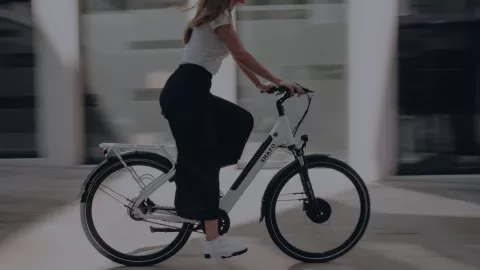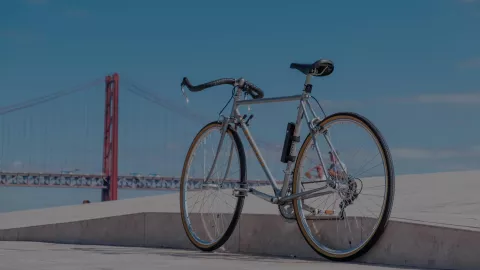European targets plan to end greenhouse gas emissions (GHGs) from cars and vans by 2035, and the gradual decrease in the price of electric vehicles points to a near future in which the car powered by an internal combustion engine will be replaced by the electric car.
Within the framework of services provided by EDP which contribute to the decarbonization of energy consumption, electric mobility plays a key role. Indeed, sustainable mobility will be essential for the decarbonization of the transport sector, which currently accounts for around 25% of global carbon emissions. For EDP, the decarbonization of the economy involves a significant increase in generation from renewable sources, accompanied by the growing electrification of energy consumption, particularly in transport.
The figures for so-called soft mobility and the benefits many cities and governments around the world have been offering to those adopting it help draw this conclusion. Electric bicycles and scooters will become a habit when traveling the so-called last mile.
What is Last Mile?
A multimodal reality was a promise from the past and is already possible today. But technology will allow it to be adopted in cities in such a way that all public or shared transport can be combined without barriers and in an integrated fashion, e.g., through the same card or app.
According toTechnavio, the last mile as a delivery sector will grow by 16% per year up to 2025 and includes delivery via robots, such as drones, using city mapping technologies.
Self-driving cars
The self-driving car does not stop with TVDE: it will be a reality for families with cars and for car-sharing companies. The advantages of traveling distances while watching films or talking to other drivers are undeniable, and when we add to this the implementation of the sharing economy for cars, this vehicle no longer has associated maintenance, cleaning, or parking costs.
There are degrees of vehicle automation already available on the market, from democratized parking sensors to self-parking features that need the driver only to assist with the operation. One of the most recent systems, Cadillac’s Super Cruise, allows hand-off driving when there is a mapped highway.
In theory, in this scenario the driver does not need to perform any function (hence hands-off or hands-free) other than to keep an eye on the road and be prepared to intervene. By monitoring his or her eyes or touches on the steering wheel, the vehicle is able to confirm that the driver remains alert.
The development of systems with higher levels of autonomy is a reality, but not yet on the roads. Laws in several countries also raise questions about cars that operate entirely without a driver, as well as the need for 5G technology, which is still not available in some countries. The move towards self-driving cars is as undeniable as the trend towards the sharing economy, however.
The future is sharing
Brookings India estimates that the sharing economy could grow to $334 billion by 2025, based on the track record and trends of such platforms as Uber and Airbnb. This car-sharing logic will change cities: less traffic and less space occupied by parking and stationary cars. The difference will lie mainly in the efficiency of electric car use. The logic of the car-owning driver means that cars currently spend 95% of the time stationary. The sharing economy created by digital platforms (which extends to other vehicles) promises to reverse this percentage, and cars will be on the move 95% of the time.
New fuels
Electric vehicles may even become the key to a more flexible and stable grid, which will be indispensable in the event of total dependence on renewable energies and increased electricity consumption. Car batteries can be genuine mobile power warehouses that are ready to supply low-voltage and areas such as city centers with a higher population density.
In a liberalized electricity market, some traditional car manufacturers are beginning to enter into the energy supply business. Volkswagen, for example, is developing this service through its Elli brand, with a greater focus on vehicle power.
All of these elements are part of the ACES (autonomous, connected, electrified and shared) revolution shaping the not-too-distant future.

